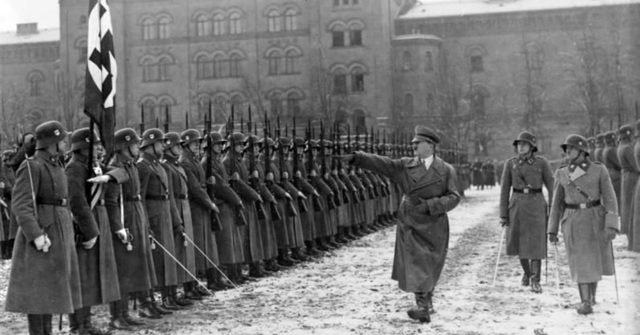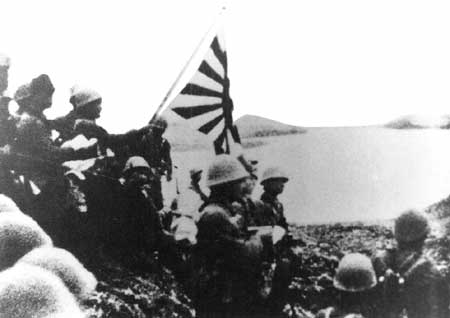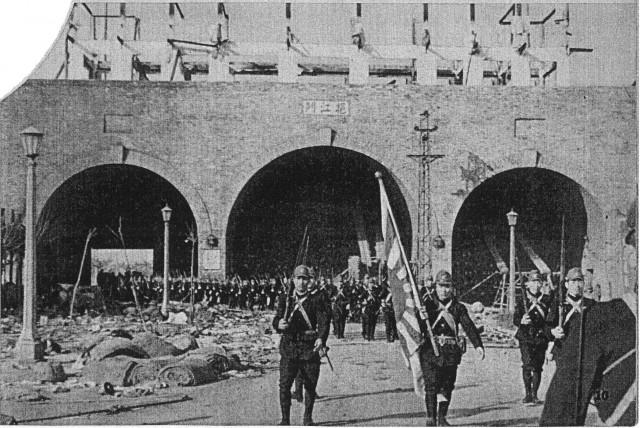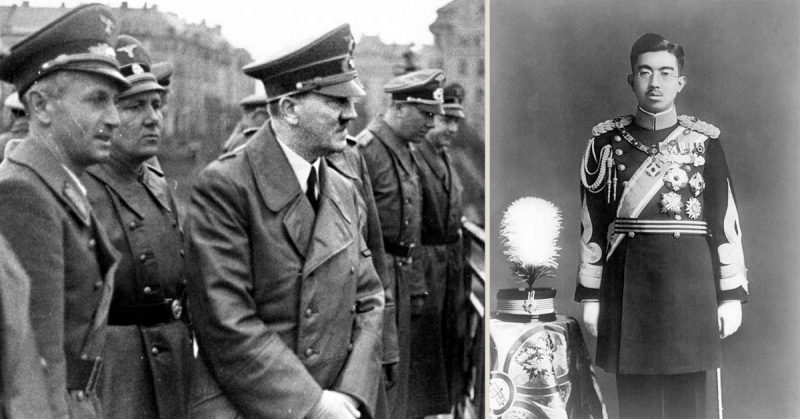For eight years of the 20th century, the Japanese were on a Crusade. Their progress was driven by an eidolon of the Japanese as a superior race, held back by their unfortunate geography on a tiny island, and by centuries of blind faith in the sword over the gun. In the middle 1930s the Japanese Empire burgeoned into South East Asia. The empire’s borders surged forth with lightning speed and hammer-like authority, its people acting like the archetype of the Japanese, circumspect of outsiders and outraged at the European holdings in their own backyard.
The Japanese had taken umbrage at years of dishonor and rotten trade deals they withstood at the hands of rich white foreigners. In a flash, the Japanese took French Indochina, Manchuria, the Dutch East Indies, The British East Indies and various other protectorates previously under the purview of the French, British, Spanish and Portuguese. Inundated with a sense of victimhood, the Japanese forces brutally sought revenge for the indignities wrought by European trade cartels, and by indigenous people all around the Pacific Rim who opposed the Japanese replevin of their lands.
By 1942, what started with the Meiji Restoration, peaked when the Japanese Empire stretched over one-fifth of the Earth’s Surface. Like their Axis partners, the Japanese performed carefully choreographed armored and airborne blitzkriegs while their mostly hapless under-gunned targets, defended by 19thcentury armies, folded. What’s worse, the Japanese were also convinced that divine powers granted this sudden leap into empire. This was not aggression. This was not revenge. This was heaven’s own destiny.
The beginning of the transformation of the island nation into a vast power was the Meiji Restoration which, among other changes, instituted the rule of an Emperor over local Daimyos. So the notion of following an absolute monarch existed in Japan simultaneously as it did in Europe. The only difference is that the power of Kings and Queens and Dukes of Europe was beginning to evanesce all the while parliaments became the actual rulers.

For Germans, total devotion to Hitler grew out of political realities, fear, state police, propagandists and the power of his charisma. For the Japanese total devotion to the Emperor grew out of a divine mythology of the Emperor as an actual God on Earth. Either way, both Hitler and Hirohito lead their people off the cliff with absolute resolute authority.
To the Japanese, the Meiji Restoration was a return to the rationality of a balanced way of applying power. No longer would Japanese bring a knife a gunfight. The sword might be a real close in weapon or a ceremonial symbol, but firearms would expand the Empire. Tanks, not cavalry. Fighters, not falcons. Rifles, not arrows. Indeed, 70 years after the Meiji Restoration, Japan was the only industrialized Asian nation.
Tokyo was a bustling thriving breathing metropolis and the Empire has capitals in Taiwan and Korea. Berlin paraded around the Volkswagen and Tokyo paraded around the new Datsun Model 70. It looked like a London Cab, and it came replete with its own marketing campaign. “Datsun is the car. And the Rising Sun is the flag.”
The global depression of the 1920s that brought Wall Street to its knees brought massive poverty to the rest of the industrialized world. Japan suffered terribly, the fallen market brought a crushing depression on them, paving the way for militarists and fascists, creating jobs with a perpetual war machine and paying for it with the real estate and resources filched during the expansion.
Impecunious times brings the worst out of people. Power vacuums beget power grabs and before you knew it, the Japanese military had become the most powerful force in the Japanese government. Overnight it seemed as if the Japanese Army ruled. The ruled the government. They ruled the schools. They ruled the factories and they ruled the street.
Tsuyoshi was murdered and Hirohito’s brother Prince Chichibu rose to power as the second in command and acted almost as a Secretary of State for the Imperial Japanese Government. On March 18, 1937, Prince Chichibu departed Yokohama for London. There the Prince was quite impressed with the military might of the British who put on a showy Naval demonstration.
Churchill espied the young Japanese militarist. He noted how interested Chichibu was in the naval power of the United Kingdom. He also noticed that the two countries were on a trajectory that could only lead to war. Britain occupied much of Asia and treated the Japanese and their neighbors like vassals in a feudal kingdom.

The Japanese Empire expanded when Japan invaded China in 1937. Like the Germans who purloined territory to redress issues of the Treaty of Versailles, Japan did the same thing to redress the fact that it did not rule in its own backyard, Britain and France did. The Japanese and the Germans saw themselves as kindred spirits, even kindred victims. Troop call-ups and general propaganda efforts recommenced in earnest. The Japanese government was telling young that the war in China would be over in months.
If there was a live analogy to the Japanese occupation of China it would be the German occupation of Western Russia. Both invading armies were vastly superior in firepower than the indigenous people. Both invading armies were vastly outnumbered and over a long enough interval could never really have conquered the territory they invaded. Like the Wehrmacht in Russia, the Japanese army in China was like playing tennis on a football field. Both invading armies were eventually defeated not by an army, but by a mission that could never have been successfully prosecuted.
As a reminder to the clamoring conquering masses of the Emperor’s acolytes that war is harsh and victory is ephemeral, by January 1938, Shanghai lay in ruins. Twenty thousand Japanese troops had already died in the vicious fighting. The Chinese had lost over a quarter of a million men and women and they were just starting to resist. The Chinese were so devastatingly poor, Japanese soldiers were just shocked at the paucity of Chinese resources, the moribund shanty-towns, and the dirty unwashed masses. That said, the Chinese fought with fierce pride. It took until the end of 1937 before Nanking; the Chinese capitol had fallen into Japanese hands.
The Japanese thought police, the Koto, arranged for school rallies festooned with children waving and singing lavish praises all whilst waving flags for the state news cameras. They needed to do this to whip up patriotic fervor and bring more troop call-ups. The one-month war in China was now several years old and growing more bloody and sticky by the minute. Meanwhile in Nanking, a campaign of brutal heartless atrocities, fueled by their racist ideology and their devotion to the Emperor was just beginning.

The opening act in a play that would end with the systematic murder of almost 400,000 Chinese citizens, the Imperial troops gathered 5000 Chinese at the Yangtse river and shot them all into the flowing waters. The Japanese were not efficient at all about this. They were sloppy and cruel. They machine gunned the crowd of men and women and children and then marched in and finished them with bayonets.
Of course things were shaping up internationally in favor of the Axis troops. In May 1938 Hitler and Mussolini conferred after Germany had annexed Austria and Italy has added Abyssinia to the new Italian conquests. They signed a pact of cooperation. By then Japan was a total militarized police state. Japan was beginning to see the edges of its recent Empirical gains begin to shred. New fronts were opening all over French Indochina, Malaysia, and Burma. Rebel reinforcements and supplies were being flown in and trucked in and walked in all the way from India to China. The Japanese were not really trying at this point to destroy China. They were trying to kick the Europeans out of it.
Soon thereafter the Japanese would double down on Empire with a strike at the US Pacific Fleet in Hawaii. The Strike on Pearl Harbor was just the first in a series of devastating aerial blows on wide-eyed Naval personnel sitting in port. On December 24th, 1941, the Japanese captured Hong Kong, and soon thereafter the British protectorate Singapore fell in a humiliating defeat where British and Indian troops outnumbered the Japanese by two to one.
Allied fleets at Darwin, Australia were also ambushed Pearl Harbor style, sinking several ships. Six weeks later another Japanese aerial raid took out British ships at the Columbo Dockyard in Ceylon (Sri Lanka).
This was just the beginning of the bloodiest conflict in Asian history.
